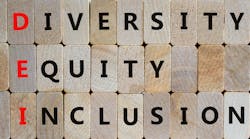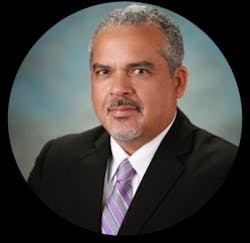Diversity, equity and inclusion (DEI) has moved, due to a myriad of reasons, from the initiative status to a strategic necessity. Much of the emphasis in developing DEI programs is to recognize the varying backgrounds, cultures and other characteristics of specific groups of people. Understanding, appreciating and—most importantly—including every employee and tapping into their knowledge are at the heart of DEI’s mission.
In the safety realm, the strategy has moved to the understanding that when employees can be their authentic selves and therefore feel secure at work, they can then extend their safety reach toward the entire organization. By clearly identifying, and even labeling, groups of individuals whose contributions might have been overlooked and creating a structure of inclusion, a level playing field is created, which can affect safety in a positive manner.
However, there is another side to this coin. Are we creating even more siloes by placing people in such categories? Are we missing the much larger picture of looking at everyone equally as humans first?
This article will explore both of those viewpoints. Lorraine Martin, CEO of the National Safety Council (NSC), weighs in on how safety begins at the individual level. Carl A. Hamilton, manager of loss control and risk management services at CooperPoint Insurance Co. and chair of the Blacks in Safety Excellence Advisory Committee for the American Society of Safety Professionals, explores how breaking down silos and expanding our views is the future of safety culture.
A Secure Employee is a Safe Employee
“If you view safety from the perspective of a company culture at the highest level, safety means having each other’s back,” says Martin. “Our heads are in the game, and we are watching out for each other. Therefore, all leaders—safety professionals included—need to understand the diversity of who they need to serve.”
To watch out for each other, employees must “feel that their voices matter and they are able to use that voice to keep everyone safe,” she adds.
Therefore, it becomes the role of companies to create an environment where people are able to speak up when they see unsafe processes and not worry about retribution. “In company cultures where employees may not feel safe or don’t feel included, the first reaction to seeing an unsafe situation is to mind your own business,” explains Martin. “This culture of non-belonging and potentially fear causes safety hazards to go undetected.”
Why wouldn’t someone speak up? Well, that’s where the cultural differences come into play.
“To understand this hesitancy to speak up, a company must understand the employee’s perspective. How do they feel when they come to their workplace? Do they feel they have the ability to bring their voice and their full self to work?” asks Martin. She does see some progress in this area. “We have moved to a place where companies understand that talent comes from a diverse world. The key is to have a culture that supports those individuals so they can fully participate in the company and its safety culture.”
And in keeping with this forward movement, in May 2022 NSC introduced the DEI Safety Champion Recognition program that honors organizations that “strive not only to ensure physical safety but foster an environment where every employee feels secure, welcome and included.”
Data-Driven Diversity
Understanding the needs of different groups can be based on using data. NSC, which has been around for more than 100 years, has a mission of seeking out methods to prevent injury and potential death.
“We accomplish our mission by looking at the data and seeing what it’s telling us—not only what is putting people at risk, but who is at risk,” notes Martin. For example, a look at data from the construction industry shows that a large number of employees are Hispanic, and they are injured at a higher rate. Why is this? It could be due to a language barrier or other factors.
“Look at your own data and understand what’s going on. What’s unique about that data and what can you do to make sure that everyone is safe?”
Moving Away from Silos
From Hamilton’s perspective, keeping everyone safe involves minimizing risk. “What I try to remember is who we are as safety professionals. We have a role to protect the organization’s assets and property as well as human capital from any kind of exposure. Human capital exposure includes physical, environmental and I now include DEI in my assessment. I look at DEI as an exposure and seek ways to mitigate the risk from an enterprise perspective.”
Minimizing any risk involves training. “People need to be trained to understand how the culture and vision of the organization is enhanced in an environment that has specific processes and metrics tied to a DEI program,” says Hamilton.
This process is where Hamilton takes exception to how we currently view DEI. “Everyone has a story and needs to tell that story of who they are," says Hamilton. "But putting people into categories such as Black or LGBTQ+ further separates people when the point is to view everyone as a human being. You hurt yourself as an organization if you put people into these slots or silos. The questions we should be asking are: What does the organization need? What does this person have to offer?”
Hamilton understands that view is, in fact, a culture shift. “If you are going to move a culture, it takes a long time, and you have to have a strategy. Start with good data and then find a solution,” he says.
And this is exactly what the safety profession is doing by including psychological safety in ISO 45003, he points out. ISO 45003 is a global standard that provides guidance on managing psychological health in the workplace. It looks at psychosocial risk, which ISO states is the “combination of the likelihood of occurrence of exposure to work-related hazard(s) of a psychosocial nature and the severity of injury and ill-health that can be caused by these hazards.” ISO also notes that well-being at work is part of the equation and states it’s the “fulfillment of the physical, mental, social and cognitive needs and expectations of a worker related to their work.”
Hamilton sees standardizing these concerns as an important milestone for the profession. “This goes way past DEI, but it’s in line with what I teach safety experts, which is that safety encompasses an expansive view that includes the psychological impact of a variety of variables on the employee. Those can include the physical structure and social factors at work, all the way to the neighborhood where a facility is located. All of a sudden, through this standard, a business has to look at things that had no bearing on profitability historically. It’s a real opportunity to think outside of the box.”
But thinking outside of the box does not mean you have to reinvent the box, Hamilton adds. “There is nothing new under the sun,” he says. “We have the tools, but we need to look at things differently.
"The pandemic has proven this. This tragedy has taught us to become better human beings. From a work perspective, the pandemic has taught us to view each employee as a person with a variety of concerns and how to adapt to those issues to ensure productivity. We should view the diverse workforce not from a siloed angle but from how best to uncover an individual’s talent.”


